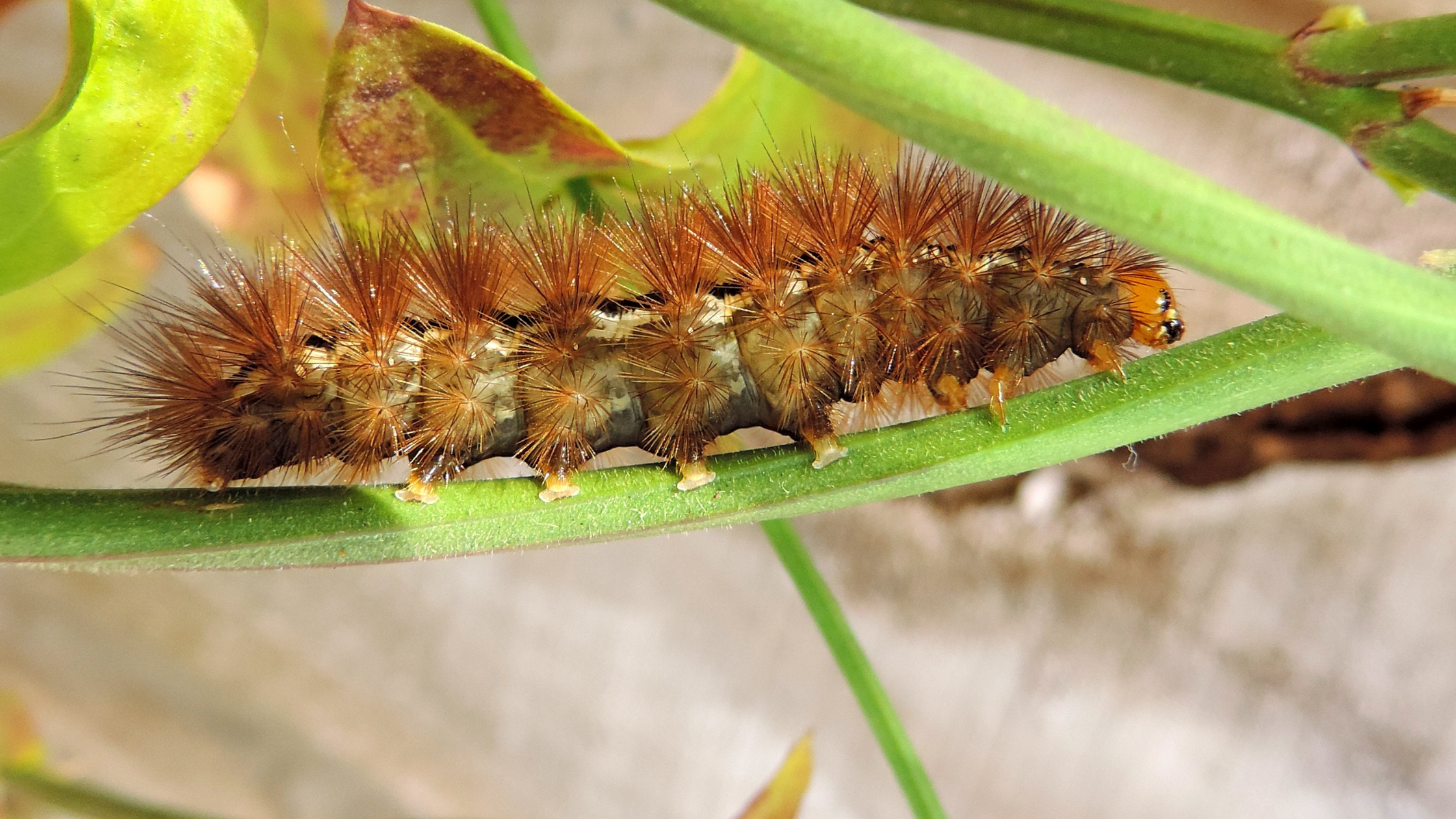
08 Sep Stinging Caterpillars
Every summer, bugs come out in full force. Mosquitos can bother people in warmer regions, but everybody has to deal with one particular insect in the summertime.
While moths and butterflies can be beautiful as adults, their infant forms can be pests! Aside from eating your precious, beautiful plants, some caterpillars have stinging hairs that can make your gardening painful.
Here are some of the ways to identify stinging caterpillars in your yard and keep yourself safe!
Identifying Stinging Caterpillars
Stinging caterpillars all tend to have one thing in common; a body at least partially covered in stiff hairs that cause a stinging pain when touched.
Several of the more common species of the stinging caterpillar have distinct appearances that you may use to identify them. Here are those features:
Io Moth Caterpillar
- Io moth caterpillars are larger caterpillars, averaging about two and a half inches long.
- These caterpillars are brightly colored, with a yellowish body striped with red and white.
- An io moth’s stinging hairs are on greenish tufts.
- Io moth caterpillars stay in groups, forming long lines.
- An io moth’s cocoon will be on the ground and be thin and papery in composition.
Buck Moth Caterpillar
- Buck moth caterpillars are slightly over one inch long in their mature form.
- Buck moths vary in color, but they are all dark. Buck moth caterpillars vary from a dark purple, almost black, to a dark brown. They also feature lines or spots going down their width, with colors from yellow to dark orange.
- A buck moth caterpillar’s venomous, stinging hairs are placed on many short, red spines covering its body.
- Buck moth caterpillars stay in groups, forming long lines.
- Buck moths primarily feed on oak and will be found near oak trees.
- Buck moth caterpillars pupate underground instead of with a cocoon- if you dig up a caterpillar, it is likely a buck moth.
Puss Caterpillar
- A puss caterpillar is about an inch long in its mature form.
- Its body is covered in long, silk-like hair. These hairs can be anywhere from yellow to brown or gray.
- Its stinging hairs are interspersed between its normal fur-like hairs, making it even more unpredictable to handle.
- Puss caterpillars prefer large trees, such as oak, apple, and hackberry, though they can also make their homes on shrubs.
- Puss caterpillars form a standard cocoon.
Saddleback Caterpillar
- Saddleback caterpillars reach an inch long in their mature form.
- Its front and rear ends are a similar brown with protrusions. Its center has a signature, green saddle mark.
- Its stinging hairs grow on these protrusions, along with smaller protrusions around its legs.
What To Do If You Cannot Identify
If you cannot identify the species of a stinging caterpillar, or whether it stings at all, then your safest bet is to avoid the caterpillar as much as possible. Do not touch it with your bare hands!
If the caterpillar is indoors, place it in a cup without touching it and move it outside. Thankfully, caterpillars do not regularly make their way indoors.



